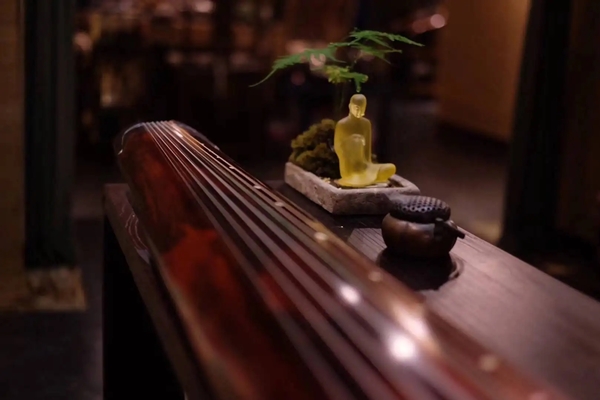Is Guqin minus-character notation scientific?
255 views · Organized by 关谷奇迹 on 2022-06-22
The subtracted notation method only indirectly records the sound of the strings, but does not record the rhythm. Is this notation method scientific?

"Subtraction notation" is a unique notation method of Guqin. It directly records the fingering of the left and right hands, indirectly records the string sound, and does not record the rhythm of the music. Using this method of notation has its own uniqueness. It is said that it does not record the rhythm of the music because the rhythm frame is already included in the fingering of the guqin, such as "rounding", "pulling three tones", "tick", "tick", "wipe", "pick", etc. Fingering has a general rhythm law to follow. In addition, qin players of different factions and regions can also change the rhythm appropriately according to the aesthetic taste of the local region or faction. In this way, notation also leaves room for the second creation for later generations to make notation, so as to adapt to the aesthetic needs of people in different historical periods and different regions. All in all, the reduced-character notation method conforms to the laws of nature and has its inherent scientific nature. Modern notation methods such as simplified notation and staff notation still cannot replace it.
Involving musical instruments
Guqin (pinyin: Gǔ Qín) is a traditional Chinese musical instrument with a history of at least 3,500 years. Guqin is also known as Yaoqin, Yuqin and Seven-stringed Qin. The guqin has 13 emblems that mark the rhythm, and is also a ritual and musical instrument. It belongs to the silk in the octave. Guqin has a wide range, deep timbre and long aftertone.
Guess you like
Organized by 未知领地 on 2024-03-17
When selecting a guqin, the timbre quality is often the primary criterion to judge its quality, because the timbre is not only related to the artistic expression of the guqin, but also deeply rooted in the unique pursuit of music aesthetics in traditional Chinese culture. Here are some basic timbre elements to consider when choosing a guqin.
read >>
Organized by 卷鹅 on 2024-03-14
With the arrival of the hot summer, for the guqin friends, how to do a good job in the hot and humid season of guqin maintenance is particularly important. Guqin as a traditional Chinese wooden chord instrument, its material is very sensitive to changes in temperature and humidity, so the correct maintenance of guqin in summer can not only extend the life of the instrument, but also maintain its pure timbre.
read >>
Organized by 雨童 on 2024-03-14
Guqin, as an ancient and rich cultural instrument in China, its playing techniques pay attention to the integration of body and mind, rhythm and emotion. In the process of learning Guqin, there is a set of sixteen words that condense the wisdom of countless piano players. They are: "Light, loose, slow, even, Tian, light, elegant, beautiful, bright, mining, quiet, far, ancient, clumsy, middle, and".
read >>
Organized by 迦夜 on 2024-03-13
Guqin, as one of the oldest plucked instruments in China, the beauty of its rhyme lies not only in the pleasant tone, but also in whether it can pop out the kind of "ancient flavor" that has traversed thousands of years.
read >>
Organized by 梦昱 on 2024-03-13
In the pursuit of Guqin skills on the road, many qin friends may encounter such a problem: despite putting in a lot of time and energy to practice hard, but the pace of progress does not seem to be as obvious as expected. This phenomenon not only dampened the enthusiasm of learners, but also triggered deep thinking on the way to improve guqin skills.
read >>

 渝公网安备 50010702504639号
渝公网安备 50010702504639号